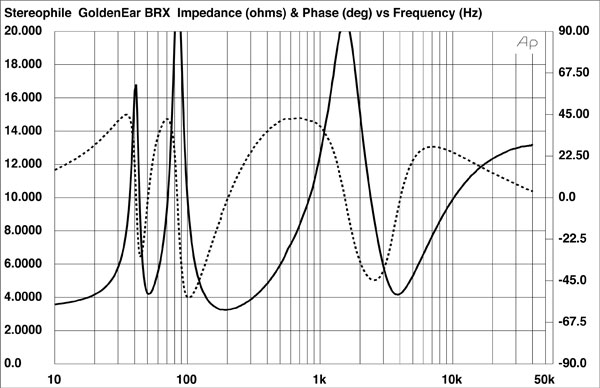Like I said your the only one so far that doesn't believe in EPDR as being a real load value to amplifiers.
Ahem.
And cool story, bro.
Like I said your the only one so far that doesn't believe in EPDR as being a real load value to amplifiers.
Your quoting a OTL amp maker!!!!!!!! Of course Ralph is going to deny it exists, he wants to sell amps too, and now he trying to manufacture a class-D and they won't cut it either into that Alexia EPDR load either. (and get that right too it's Atmasphere)Ralph at Atmosphere
Your blind, if you see it that way, or maybe your in with the class-D projectand makes no blind wild claims about tube amps
Quite the opposite your ragging and demeaning on everything said. Show quotes from "known hiend designers" of SS amps that back you.Okay George, I am trying to help you out here.
Didn't cut it how? Which class-D amp?Especially when we tried it on Edgar Kramer's Soundstage resident speaker Wilson Alexia's. A 400w Class-D just didn't cut it in the low bass even though it was stable, compared to a 100w Gryphon.
Didn't cut it how?
Those are subjective remarks that can't be verified. If the amplifier shut down, damaged, etc., then there would be something. That is the context for EPDR anyway. In other words, this is no evidence one way or the other.Drive, dynamics and depth of the lows, the Class-D just sounded thin and un-dynamic, like they were running out of steam even though they were 400w, compared to the 120w Gryphon
Quite the opposite your ragging and demeaning on everything said. Show quotes from "known hiend designers" of SS amps that back you.
Especially when we tried it on Edgar Kramer's Soundstage resident speaker Wilson Alexia's. A 400w Class-D just didn't cut it in the low bass even though it was stable, compared to a 100w Gryphon.
George there are many actual amplifier designers on this forum. You will note the ahem above. They are not rushing to defend you because you are wrong.
What sort of test was done to confirm this assertion? Would be interested to see the results of same if available.the Class-D just sounded thin and un-dynamic
Goodbye
And they don't rush to defend you either, we know what we heard and we go with what Stereophile describes EPDR is as load seen by an amplifier, and it worse than just low impedance alone if combined with high negative phase angle. As as it sounded just like it on the Alexia's when it was driven by 400w Class-D
Goodbye
https://www.stereophile.com/reference/707heavy/index.htmlTaken together, these figures confirm that the orders of EPDR identified in figs. 8–10 are of real, practical significance when playing music signals: speakers really can make these high demands of amplifier output-device dissipation in normal use. If the amplifier's protection is invoked as a result, then its output will be clipped, even though the speaker's voltage and current demands may be within its capability.
Any news?There's a significant flaw in this metric. I'm currently (ouch!) working on a better method. Initial results look interesting.
I think that it will likely be complete and published by December.
Looks like I'll have the article out in about a month or two.Any news?
https://www.stereophile.com/content/goldenear-brx-bookshelf-reference-x-loudspeaker-measurements
And he is going back to previous reviews and adding this in.
EPDR (Equivalent Peak Dissipation Resistance) takes the impedance and phase data and computes a new impedance that shows what equivalent load the amplifier will see. This takes the guesswork out of knowing how an amplifier will handle a given speaker if we have measurements of that amp into low impedance.
For example, in the BRX link above, here is the raw impedance & phase:

The raw impedance never goes past 3ohm. However, at 135Hz where the impedance is ~5ohm and the phase around -45°, the EPDR is 1.53ohm, over 3x lower.
This is something that I believe would greatly benefit Amir’s reviews, we just need to know the calculation.
For those providing EQ adjustments to speakers measured here, it would also be interesting to see how they effect the EDPR.
Sorry you are the only one so far I've seen denying the exitance of EPDR as a real load presented to an amp, especially in the bass where it demands big current delivery if it's low impedance as the 0.9ohm EPDR of the Wilson Alexia's.
How DOES complex impedance related to heat dissipation in class D amps?The EPDR does not apply to the heat dissipation of class D amps that have a pulse modulated output.
